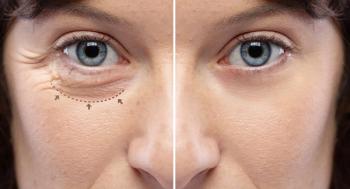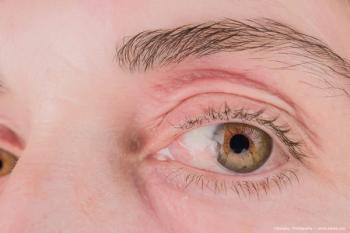
Pegaptanib benefits continue in second year of AMD trial
Montr?al—The benefits observed in patients with age-related macular degeneration (AMD) after 1 year of treatment with pegaptanib sodium (Macugen, OSI/Eyetech Pharmaceuticals) continued into the second year of treatment with pegaptanib sodium and surpassed those outcomes achieved with 1 year of treatment followed by usual care and 2 years of usual care, according to Donald J. D'Amico, MD.
Dr. D'Amico reported the 2-year efficacy results for the VISION Study Investigator's Group at the American Society of Retina Specialists meeting in Montréal.
The study consisted of two randomized, double-masked, sham-controlled, dose-ranging trials. In the first year, the patients were treated with pegaptanib sodium every 6 weeks; the control group was given sham injections. Patients could also be treated with photodynamic therapy at the discretion of the principal investigator. The study continued for 54 weeks, and patients receiving active treatment were treated every 6 weeks. At the end of the first year, the patients either continued on active treatment or were given sham treatment until week 102.
After 2 years
"The treatment effect of pegaptanib sodium continued for 2 years," Dr. D'Amico said. In the first year of the study, the patients received a mean of 8.5 of nine possible treatments and at the end of the second year a mean of 16 of 17 possible treatments.
In a comparison of 133 patients who received continuous treatment with pegaptanib sodium 0.3 mg for 2 years and 107 patients who received usual care for 2 years, the patients who were treated with pegaptanib sodium maintained a higher level of vision and experienced a 45% benefit (p < 0.01). The patients in the pegaptanib sodium group lost 9.4 letters compared with the patients who received usual care, who lost 17 letters.
Dr. D'Amico demonstrated the continuous effect of pegaptanib sodium over the course of the study.
"At baseline, in a patient with macular edema and hemorrhages, fluorescein angiography showed a minimally classic subfoveal lesion, and the visual acuity was 20/63," he said. "After 1 year of treatment, there was less leakage and the visual acuity was 20/40. After 2 years of treatment, the vision improved to 20/20; the macula was flatter compared with baseline although evidence of occult choroidal neovascularization persisted."
A clear benefit was seen in patients who continued pegaptanib sodium for 2 years compared with those who were treated with pegaptanib sodium for 1 year and who then received regular care. There were 67% more losses of three lines of vision in the group who were treated with pegaptanib sodium for only 1 year (35 occurrences of loss of three lines compared with 21 occurrences) (p < 0.05), Dr. D'Amico reported.
In addition, the rate of re-leakage at week 102 was higher in patients who discontinued pegaptanib sodium after year 1 than in those who continued with the drug.
Some gain vision
More patients who continued pegaptanib sodium treatment for 2 years gained lines of vision compared with those who received usual care: 22% versus 14%, respectively, gained one or more lines of vision, 11% versus 6% gained two or more lines, and 10% versus 4% gained three or more lines.
Newsletter
Don’t miss out—get Ophthalmology Times updates on the latest clinical advancements and expert interviews, straight to your inbox.









































